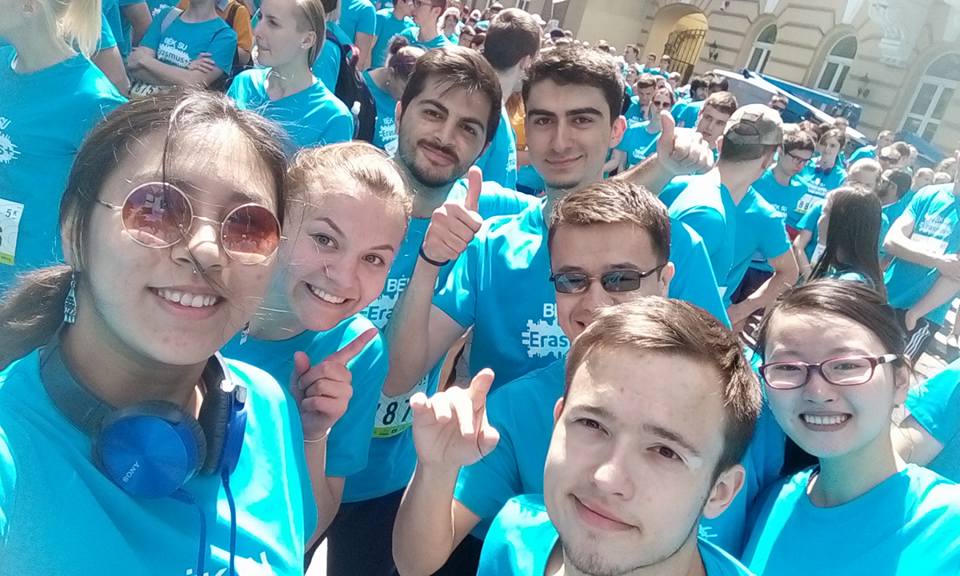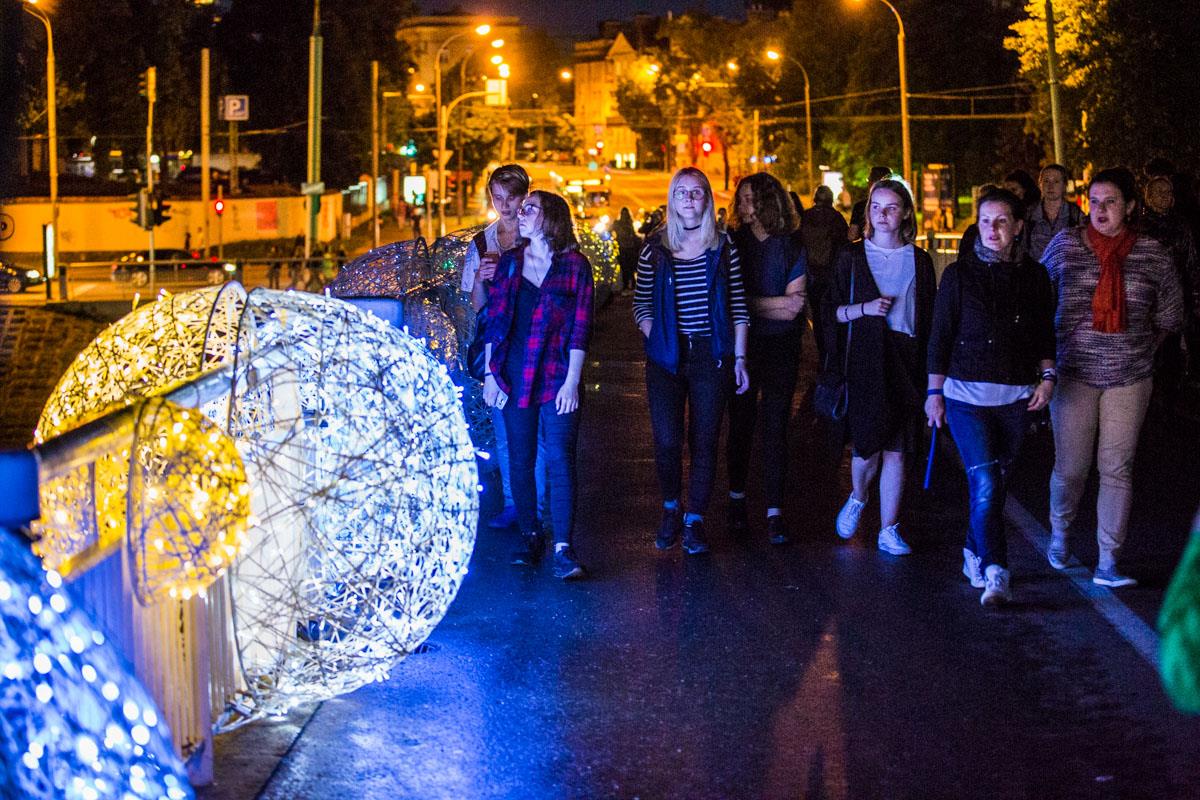Culture
COLLEGE ACTIVITIES
 Vilnius College of Technologies and Design offers various activities for local and foreign students. Regarding sports, the college has a large sports hall and an athletic gymnastics hall. Local students have formed various clubs: basketball, volleyball, ping pong, football, darts, weightlifting, track and field and athletic gymnastics. Students regularly represent College in different sport competitions - local, regional, international. It is popular among Erasmus exchange students to play football once a week with the local amateur football team. Also, in Spring 2016, Erasmus team participated in RUN VILNIUS. For those who are less into sports and more into technologies, VTDK.hackLAB is the place to be. VTDK.hackLAB is a facility based on hackerspace format and is a part of Vilnius College of Technologies and Design innovation center. Its main purpose is to gather people of various skills to work on interesting projects, learn together and then share it with everyone. They carry out various workshops during the year.
Vilnius College of Technologies and Design offers various activities for local and foreign students. Regarding sports, the college has a large sports hall and an athletic gymnastics hall. Local students have formed various clubs: basketball, volleyball, ping pong, football, darts, weightlifting, track and field and athletic gymnastics. Students regularly represent College in different sport competitions - local, regional, international. It is popular among Erasmus exchange students to play football once a week with the local amateur football team. Also, in Spring 2016, Erasmus team participated in RUN VILNIUS. For those who are less into sports and more into technologies, VTDK.hackLAB is the place to be. VTDK.hackLAB is a facility based on hackerspace format and is a part of Vilnius College of Technologies and Design innovation center. Its main purpose is to gather people of various skills to work on interesting projects, learn together and then share it with everyone. They carry out various workshops during the year.
 Design faculty has a climate of its own, and it's bustling with creative projects. Students are constantly participating in internal, regional and international competitions and exhibitions. The Faculty hosts Design Days every Spring, and this is the most important event for the community, where students showcase their artistic work. Design faculty staff and students take part in countless workshops throughout the year. They also take part in collaborative projects with other institutions, businesses, municipality etc.
Design faculty has a climate of its own, and it's bustling with creative projects. Students are constantly participating in internal, regional and international competitions and exhibitions. The Faculty hosts Design Days every Spring, and this is the most important event for the community, where students showcase their artistic work. Design faculty staff and students take part in countless workshops throughout the year. They also take part in collaborative projects with other institutions, businesses, municipality etc.
LITHUANIAN CULTURE
History
 First known habitation of Lithuania dates back to the final ice age, 10 000 BC. The origin of Baltic tribes in the area is disputed but it probably dates to around 2500 BC.
First known habitation of Lithuania dates back to the final ice age, 10 000 BC. The origin of Baltic tribes in the area is disputed but it probably dates to around 2500 BC.
Baltic settlements were outside the main migration routes and thus are among the oldest European ethnicities to have settled in approximately current area. These Baltic peoples traded amber with Romans and then fought Vikings. In the era only one small tribe from area around Vilnius was known as Lithuanians but it was this tribe that consolidated the majority of other Baltic tribes.
Lithuanian name was first officially mentioned back in 1009 in Qedlinburg annals, but it truly emerged as a state in early XIIIth century after the union of the main lands. At the turn of the XV century Lithuania became one of the most powerful states in the Eastern Europe. Lithuania has faced many wars and disputes with various countries over the centuries, from both East and West. Although the current territory of Lithuania is small in comparison to the lands it once held, traces of Lithuanian heritage can still be found in some of the neighboring countries.
Lithuanian Food
Lithuanian traditional cuisine has a lot of potato dishes. Potatoes, along with tomatoes and cucumbers, arrived to Lithuania in the XVIIIth century, brought by Bona Sforca, an Italian noblewoman who became Lithuanian Grand Duchess and the Queen of Poland. Originally, there were two distinct cuisines – „manor“ and „peasant“. Peasants ate largely what they could grow themselves – porridges, other grain products, seasonal vegetables, mushrooms, berries, occasionally – meat. Bread was considered sacred, and Lithuanians to this day have (and love) a very distinct traditional rye bread, called Black bread. „Manor“ cuisine had some more exotic spices and meats, like game, and was greatly influenced by foreign cuisines – German, Italian, French, Tatar.
The meal most strongly associated with the Lithuanian nation is the Cepelinai, a heavy dish named after Graff von Zeppelin because these potato dumplings, stuffed with meat, are similar in form to the airship he invented. Lithuanians eat a lot of soups. One of the most interesting Lithuanian soups is cold beetroot soup (Lit. Šaltibarščiai), which is made from beets and a fermented milk product called kefir and served with hot potatoes. This dish, nicknamed by the foreigners as the „pink soup“, is a delight on a hot summer day.
Sports
Locally nicknamed „the second national religion“, basketball is the most popular sport in Lithuania. National team has won three bronze medals in the Olympic games (in 1992, 1996 and 2000), also 3 golds (in 1937, 1939 and 2003), two silvers (in 1995 and 2013) and a bronze (2007) in the European Championship. In the World Championship, they have a bronze medal from 2010 and came in 4th in 2014. The all-time most famous Lithuanian basketballer is Arvydas Sabonis, but we had, and still do, many more good players with high achievements in European and NBA clubs. Lithuania also has many famous accomplished sportsmen in other sports – like V.Alekna, Olympic champion in discus throw and R.Meilutyte – Olympic champion in swimming. Americans know and love Lithuanian-born Johnny Unitas, one of the favorite football players in US history. As for your interest in exercise, Vilnius has recently developed a strong trend of outdoor sports, so join the crowds in one of the many marathons organized throughout the year!
Religion
Religion is quite influential in Lithuania, and moral values in the society are very important. The majority of Lithuanian population is Roman Catholics, the traditional religious community. However, Lithuania was Christianized later than all of the other countries in Europe, in the turn of the fifteenth century. Therefore, nature plays a large role in Lithuanian culture and tradition and some of the Pagan culture was preserved to this day through celebration rituals, song and fairytale symbolism, names etc. Because of the long history of settlement, pagan roots and the enemies that were a constant threat throughout the centuries, Lithuanians are very fond and protective of their land.
Other details about Lithuania

Lithuania is a member of the EU since 2004. Culturally, Lithuania has been seeking westernization ever since the restoration of independence from the Soviet occupants back in 1990. Ethnically, Lithuania is rather homogenous, with Lithuanians making up around 84% of the population of about 3 million people. In Vilnius region, compared to others, we have a considerable number of Polish and Russian people. Historically, Vilnius region has always been multicultural and that had a great influence on the shaping of Vilnius identity.






